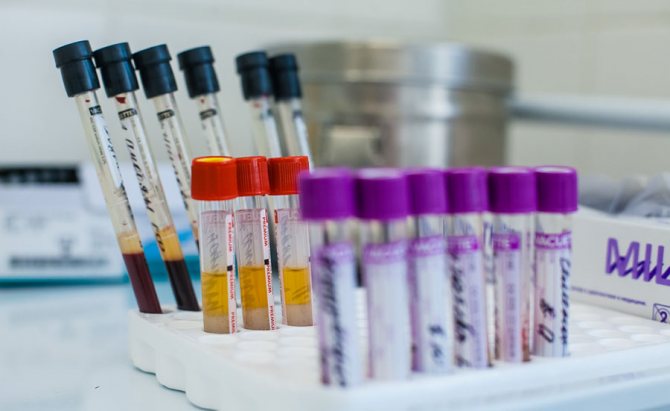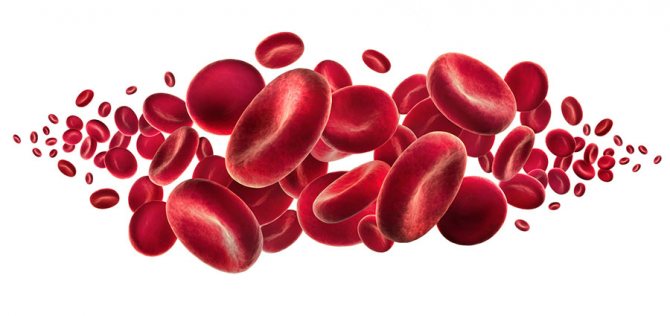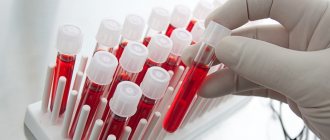Acute bronchitis
Acute bronchitis is an inflammation of the bronchi, in which the mucous membrane of the bronchi produces a large amount of sputum, which leads to coughing. The cause of this disease is most often the same viruses that cause ARVI or influenza, so acute bronchitis often occurs after a cold. Bacterial bronchitis is less common, and acute toxic bronchitis is even less common, that is, caused by vapors of hydrogen sulfide, chlorine, ammonia, organic dust and other substances toxic to the lungs.
Most symptoms of acute bronchitis last for about 10 days, but a cough may bother a person for several weeks. This disease is common in people of all ages, but older people and children are most susceptible to it. Also at risk are smokers and patients with chronic lung diseases.
Most often, acute bronchitis ends in complete recovery, but sometimes it can become protracted and become chronic or lead to complications - pneumonia, atelectasis.
Synonyms Russian
Bronchitis, bronchiolitis, acute bronchiolitis.
English synonyms
Chest cold, bronchitis, acute bronchitis.
Symptoms
The severity of the manifestations of acute bronchitis depends on a combination of factors: the patient’s age, previous diseases, general health. The main signs of acute bronchitis are:
- cough - dry in the first days of illness and with the separation of clear or purulent sputum from the 3rd-4th day;
- symptoms of a cold (fever, lethargy, malaise, headache, sore throat, etc.);
- dyspnea;
- chest tightness or pain;
- wheezing in the lungs, audible at a distance;
- difficulty breathing.
General information about the disease
In order to get into the lungs, where the blood is saturated with oxygen and released from carbon dioxide, air passes through the nasal cavity, larynx, trachea and bronchi. The trachea is divided into two main bronchi, each of which gives rise to smaller ones, down to the smallest bronchioles - the so-called bronchial tree is formed. The bronchi are tubes with a frame of cartilaginous rings, thanks to which they do not compress. The inner surface of the bronchi is lined with a mucous membrane, consisting of cells of various types (ciliated and goblet) and containing the excretory ducts of the bronchial glands. Goblet cells and bronchial glands produce mucus, which protects the bronchial mucosa from damage. The directed movement of the processes of ciliated cells clears the bronchi. Mucus also contains lymphocytes, neutrophils, and immunoglobulins, which protect the respiratory tract from infection. In the bronchi, the air is purified, moistened and warmed.
When viruses, bacteria or toxic substances (hydrogen sulfide vapor, chlorine, ammonia, organic dust) enter them, the cells of the mucous membrane are damaged - the movement of the villi of the ciliated epithelium is disrupted, the goblet cells produce an excess amount of more viscous thick mucus, the mucous membrane becomes inflamed and swollen. As a result, the process of natural cleansing of the bronchi is disrupted, mucus accumulates in the lumen of the airways, which leads to a cough, first dry, and then with the release of thick, viscous sputum. The lumen of the bronchi narrows, and wheezing becomes audible when breathing. In young children, mucus can completely clog the lumen of the smallest bronchi - bronchioles, as a result of which breathing is impaired and atelectasis occurs, that is, collapse of sections of the lungs. This type of bronchitis is called acute bronchiolitis.
Acute bronchitis can develop at any time of the year, but is more common in the autumn-winter period. The most common causative agents of this disease are respiratory syncytial virus, adenovirus, influenza and parainfluenza viruses. The most likely route of infection is through droplets of sputum released by an infected person coughing into the respiratory tract.
Treatment of acute bronchitis is selected depending on the severity of symptoms, the patient’s age, and concomitant diseases. Most often, all acute symptoms of the disease disappear within two weeks, although a residual cough may bother the patient for several more weeks.
Who is at risk?
- Smokers.
- Aged people.
- Children.
- People with reduced immunity.
- Patients with chronic lung diseases.
- People who frequently come into contact with chemicals or dust at work.
Diagnostics
The diagnosis of bronchitis is largely based on the presence of relevant symptoms and a medical examination. However, there are additional diagnostic methods necessary for an accurate diagnosis, determining the severity of the patient’s condition and selecting the optimal treatment.
Laboratory diagnostics
- Complete blood count (without leukocyte formula and ESR) with leukocyte formula. With bronchitis, the number of leukocytes may be increased, mainly due to neutrophils. This is a sign of inflammation.
- ESR – erythrocyte sedimentation rate. Normally, red blood cells repel each other. During inflammation, the ratio of proteins in the blood changes, as a result, red blood cells begin to stick together and settle faster to the bottom of the test tube, that is, the erythrocyte sedimentation rate increases. ESR is a nonspecific sign, that is, it can change with various disorders: infections, autoimmune diseases, malignant tumors, leukemia. With bronchitis, ESR may be increased.
- C-reactive protein. This is a protein that is produced by cells when they are damaged by foreign agents. It performs a protective function and activates the immune system. CRP is a very sensitive indicator that is one of the first to respond to inflammation. With bronchitis, its level is increased.
- Sputum culture with determination of sensitivity to antibiotics. They use sputum that is released when you cough. It is placed on a nutrient medium. Microorganisms grow over several days, and then their response to antibacterial drugs is determined. The analysis is used when the bacterial nature of bronchitis is suspected to select the optimal antibiotic.
- Culture for Bordetella pertussis (whooping cough) or PCR with determination of Bordetella pertussis DNA. These tests are not mandatory, but can be prescribed by a doctor, since the symptoms of bronchitis and whooping cough are sometimes similar. Whooping cough is more common in children, and is especially dangerous for those under two years of age.
Other research methods
- X-ray of the chest organs. Used to rule out other lung diseases that may cause coughing or complications of bronchitis, such as pneumonia. With uncomplicated bronchitis, changes on the radiograph are usually absent.
- Spirometry. During the study, the patient takes a deep breath and then quickly exhales into a special device - a spirometer. Using spirometry, signs of asthma or emphysema are detected when air is trapped in the lungs.
Treatment
Treatment of bronchitis depends on the cause of the disease, the type of bronchitis, and the severity of the patient’s condition.
In case of acute bronchitis, bed rest, plenty of warm drinks, and humidification of the air in the apartment are necessary. As a rule, it is treated at home; hospitalization is required only if the therapy does not make breathing easier and does not improve the patient’s condition, which usually happens in the case of complications. To treat bronchitis they use...
- Antibiotics. They are used only if the bacterial nature of bronchitis is confirmed; they are ineffective for a viral infection. In addition, they may be prescribed to patients suffering from chronic lung diseases to prevent complications of bronchitis.
- Antitussive drugs. They are not always used, since coughing is a protective mechanism that helps cleanse the bronchi. However, they help with severe coughing attacks or if the cough prevents the patient from sleeping.
- Bronchodilators are drugs that increase the lumen of the bronchi by relaxing the smooth muscles in their wall, which makes breathing easier and helps clear the bronchi of mucus. They are used rarely, for debilitating cough or for obstruction of the respiratory tract.
- Mucolytics are drugs that thin the mucus, making it easier to remove from the bronchi.
Prevention
To reduce the risk of developing bronchitis, you must:
- quit smoking,
- observe the rules of hygiene,
- in case of illness, return to usual activities only after the complete disappearance of ARVI symptoms,
- get vaccinated in a timely manner.
Recommended tests
- General blood analysis
- Leukocyte formula
- ESR (erythrocyte sedimentation rate)
- C-reactive protein, quantitative
- Culture of flora with determination of sensitivity to antibiotics
What blood indicators indicate bronchitis?
A blood test for bronchitis allows you to determine not only the form of the disease, but also to identify the main cause of the pathology.
Like 1
5935
But in order to understand the causes of the disease and prescribe the correct treatment, you need to know the main indicators determined by a blood test.
Changes in the blood due to pathology
The patient's condition, when considering a blood test, is always considered in accordance with the norms of the main indicators. Any inflammatory process that occurs in the body entails changes in individual blood parameters. In cases where inflammatory processes begin in the bronchi, leukocytes and an indicator such as ESR (erythrocyte sedimentation rate) are the first to respond to pathology. This happens because leukocytes are the main cells of the human body’s immune system, suppressing the activity of pathogenic processes.
- 234
More details - 630
More details
- 330 294
More details
- 315
More details
Types of analyzes
To determine the nature of bronchitis in a patient, as well as to select the most effective methods of treating the pathology, the patient is prescribed the following types of blood tests: Complete blood count; Blood chemistry. The main diagnostic method in this case is a general blood test.
General
For bronchitis, a general blood test is one of the main and mandatory tests. Carrying out this study allows us to trace the presence and degree of development of the inflammatory process characteristic of bronchial lesions.

Biochemical
Blood biochemistry allows you to accurately assess the patient’s condition, metabolic processes and his respiratory system. Biomaterial for research is taken from a vein.
During a blood test, the activity of angiothesin-converting enzyme, as well as the level of alpha and gamma globulins, is determined.
How to prepare for the test?
In most cases, blood for analysis for bronchitis is taken from a finger. In general, a blood test for a patient is a simple procedure that does not require special preparation. However, in order to obtain the most accurate indicators for bronchitis, a blood test must be taken, adhering to the following recommendations:
- For 1 day before donating blood for analysis, refrain from intense physical activity.
- The day before the analysis, do not eat fatty foods, smoked foods and dishes with a high content of spices.
- Do not drink alcoholic beverages, tea or coffee for 2-3 days before the test.
- Do not use medications for 5-7 days before the test. If this is not possible, the patient must notify the doctor. what medications they are taking.
- Do not smoke on the day of blood collection.
- On the day of the test, be sure to drink plain water. It is important that the water is still and without any flavoring or aromatic additives.
- Donate biomaterial in the morning on an empty stomach. The duration of fasting should be 10-12 hours.

If all recommendations are followed, the blood test will be the most accurate and free from impurities of substances and biological particles that appear during physical fatigue, as well as consumption of junk food and alcohol.
To collect biomaterial, a hole 2-3 mm deep is made in one of the finger pads, previously disinfected with an alcohol solution, a special needle, or a scarifier. The protruding blood is collected into a separate flask with a special pipette. A little blood is also applied to the slide.
For the study, venous blood may be required only in exceptional cases. To collect biomaterial in this case, the patient’s arm is pulled in the forearm area using a tourniquet. The inside of the elbow is wiped with alcohol and a needle with a test tube is inserted into the vein. The blood is collected in a test tube and, in a small amount, applied to a laboratory glass slide.
Indicators and decoding
The main indicators when conducting a general blood test are:
- Red blood cells;
- Leukocytes;
- Platelets;
- Hemoglobin.
Red blood cells
Erythrocytes, or red blood cells, are produced by the human brain. The main task of these particles is to transport oxygen to the organs and systems of the human body. They are also responsible for stabilizing the oxidation process in the body's cells. In blood test results, red blood cells are labeled as RBC.
Since the development of bronchitis in the patient’s lungs causes an imbalance in the acid-base balance, the level of red blood cells in the tests of such a patient will be slightly elevated. A low level of red blood cells is observed in patients with anemia, as well as with significant blood loss.

Leukocytes
These cells are formed in the bone marrow and also in the lymph nodes. The main purpose of these cells is to protect the body from any pathological cells. In this case, all leukocytes are divided into several types:
- Neutrophils;
- Eosinophils;
- Basophils;
- Monocytes;
- Lymphocytes.
A high level of leukocytes indicates the presence of acute inflammatory processes, injuries and increased physical activity. Reduced levels appear with anemia, bone marrow hypoplasia, leukemia, typhus, as well as while taking certain antibiotics and anti-inflammatory non-steroidal drugs.
The nominal leukocyte counts in adults are (4 – 9)*109l. For children, the range of normal values is (7 – 12)*109l.
Platelets
Platelets, or PLTs, are flat, anucleate cells. They take part in the formation of blood clots necessary to close damaged tissues and stop bleeding. An increase in the number of platelets indicates the presence of an inflammatory process in the patient’s body. A low platelet count indicates the presence of anemia, liver or bone marrow disease.
For men, the normal range of platelets in the blood is 200-400 thousand units/μl. For women, the norm is 180-320 thousand units/μl. However, during menstrual bleeding, the rate can drop to a range of 75-220 thousand units/μl. For children under 1 year of age, this range is 150-200 thousand units/μl. At the age of 1-5 years, the norm is 150-350 thousand units/μl. In children over 5 years old, results of 180-450 thousand units/μl are considered normal.

Hemoglobin
Hemoglobin helps saturate the body with oxygen. These cells also remove remaining carbon dioxide from the body.
The normal hemoglobin level for men is in the range of 130-170 g/l. In women, the norm is 120-150 g/l. For children over 5 years old, the nominal values are 115-150 g/l. For babies under 1 year old, the norm is 90-130 g/l.
ESR
ESR during bronchitis shows the presence of sluggish chronic diseases in the body, and allows us to identify the cause of their occurrence, as well as the location of the source of inflammation.
Normal ESR values for adult men are up to 10 mm/h. For women, the norm is up to 20 mm/h, for children up to 17 mm/h.
In lung diseases, ESR rises to 100 mm/h.
Tags: Health Water Sugar Smoking Heart Dehydration Youth Bacteria Tips Healthy foods Harmful foods Heart attack
Dear readers! Thank you for reading our blog! Receive the most interesting publications once a month by subscribing. For new customers, upon their first order, we give 12 bottles (2 packs) of BioVita mineral water or Stelmas drinking water. Operators will contact you and clarify the details. Tel. 8 (800) 100-15-15
* Promotion for Moscow, Moscow Region, St. Petersburg, Leningrad Region
Thanks for subscribing to our newsletter







